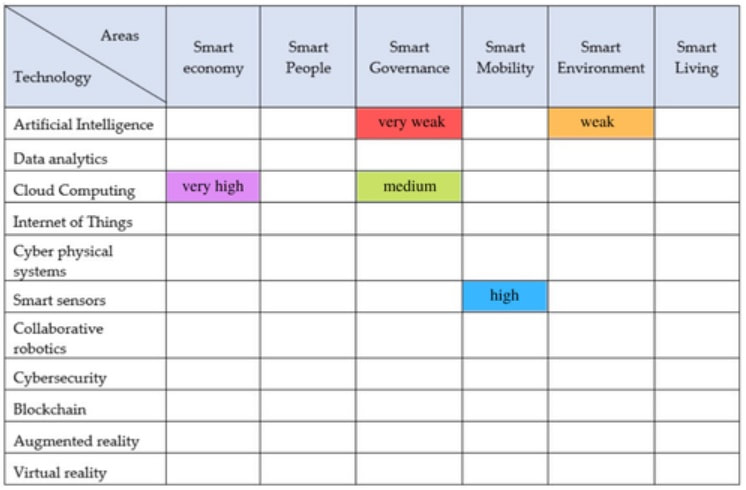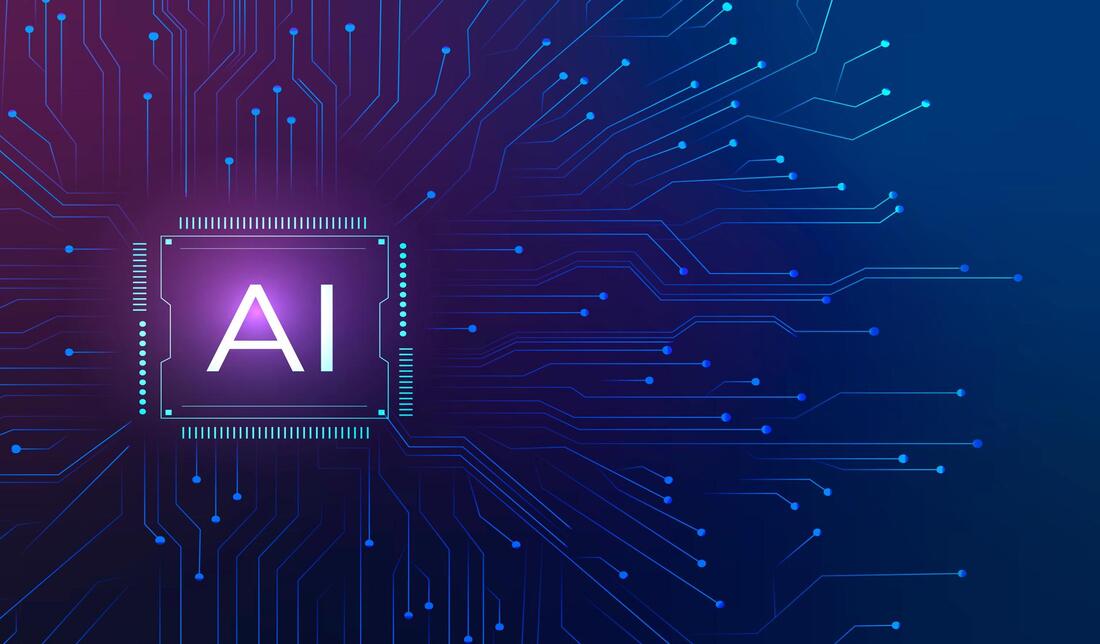|
The SMART project is aimed at developing new competencies of the SMEs managers to manage deep-tech businesses in one very fast-growing market - the smart cities. The penetration of so-called smart city technologies results in the creation of new markets and requirements for new skills. On the basis for the achievement of this purpose is laid the map of digital smart disruptions. This short article explains some important terms and the approach implemented in this project. What is a Map of Digital and Smart Disruptions (in the context of smart cities)?The picture is worth a thousand words - Fred R. Barnard. The map of digital and smart disruptions provides an easy for understanding and learning overview and analysis of how digital and disruptive technologies (innovations) do shape the smart city concept. The map includes the results generated by the focus group and corrected later by the partners with the results from the research on the technologies advances, level of change and impact, performance, purpose, and fit. The map is a two-dimensional cross factorial analysis matrix made with different instruments in diverse forms (Fig.1). Fig.1. Mapping the disruptive smart city technologies (the filled areas are only exemplary) The ultimate purpose of a map is to improve the scenario planning of businesses and the cities in the process of their transformation into smart cities and to point out the opportunities for involvement of the businesses in the process. So, this can be treated as a sample of an opportunity map for every city in the process of urban management and for every company in the process of innovation management. In the case of the project SMART, the map will present the results of the studies and research of the project partners in a systematic and simplified way, based on:
What is a Disruptive Smart City Technology?The definition of the disruptive innovation given by Clayton Christensen is the innovation that creates a new market and value network and eventually disrupts an existing market and value network, displacing established market-leading firms, products, and alliances. The following benefits and changes coming from the disruptive innovations are identified:
Following this definition, it is easy to presume that in general the “disruptive smart city technology” is any kind of emerging, advanced & digital (but not only) technology that can generate disruptive innovations creating benefits and many changes in the context of an urban (territorial) area and if this process is well managed it should result in a better life of the citizen. What Does the Process of Mapping the Smart City Disruption Mean? The mapping is a structured process, focused on a topic or construct of interest, involving input from many participants, that produces an interpretable pictorial view (concept map) of their ideas and concepts and how these are interrelated. The mapping helps partners to think more effectively as a group without losing their individuality. It helps the project group to manage the complexity of the vision on the smart city disruptive technologies without trivializing them or losing detail. The mapping process is one of the portfolios of many other similar methods that management and social scientists have developed like brainstorming, brainwriting, nominal group techniques, focus groups, affinity mapping, Delphi techniques, facet theory, and qualitative text analysis. The mapping process is focused on the major shifts from the business perspective and how these changes will affect the growth. It uses focus groups to understand and analyse the impact of smart city technologies and their application for business growth. The trends, types of technology, and levels of transformation are included in studying within the process. Consequently, the project partners have to study a framework of the following five dimensions of these technologies:
The study includes the level of impact and change of the emerging technologies - so, what does exist now and what is the current maturity level (according to Gartner). What Stages Does the Process of Mapping Include in a Focus Group? The process is placed in a focus group that is facilitated by the leader of the mapping process. A mapping process in a such group involves five steps that can take place in a period of time, planned for the output and depending on the project development situation.
The Article was first published on the Smart by Design website, blog content. This article is animated by the interim results of an ongoing Erasmus+ project named Smart technologies by design (Smart by Design). The project is being carried out by the following partners:
In a number of articles the project partners of Smart by Design present their findings and deliverables generated and developed during the project execution. Our attention is focused on the gap between the citizen's (smart cities') needs, the technological solutions which can cover these needs, and the knowledge and skills of citizens, cities and service providers of using these technologies for a better life. Technologies Make Cities SmarterDisruptive technologies have the potential to transform the way cities currently operate and they are at the core of nearly all upcoming smart city’s solutions. After a decade of experimentation, smart cities are entering a new phase. Although digital solutions are only one of the tools needed to make a city great, they are the most powerful and cost-effective additions seen in many years. According to the McKinsey Global Institute, digital solutions could improve some quality-of-life indicators by as much as 30 per cent. Real-time crime mapping, for instance, utilizes statistical analysis to highlight patterns, while predictive policing goes a step further, anticipating crime to head off incidents before they occur. Another example of these solutions is the Internet of Things sensors on existing infrastructure systems which can help crews fix problems before they turn into breakdowns and delays. If we examine our history, we realize that we live in constant change. Humans have faced all sorts of changes, economic, political, climatic, technological. In the different industrial revolutions seized, adaptations made by humans can be perceived, along with the 1st industrial revolution, the railway arrived with the steam engines which enabled transportation of goods causing all the farming, demographic and transport revolution. Afterwards, the 2nd industrial revolution arrived, emerging new energy sources like oil and electricity, which with its utilization, first technological innovations took place. These technological innovations produced an improvement in the quality of life of people, first personal computers and the internet appeared which located us before a 3rd industrial revolution, not only in a technological one but in a scientific and a cultural one. With this 3rd revolution, fast technological advances force humans to assimilate more concepts in a shorter time, information, productivity and everything reach scales not previously reached and under this context the 4th industrial revolution appeared, where we really perceived and realized that we live in a constant change, as mentioned at the beginning, achieving small or big progress which is changing the world. A Vision of the Cities of the FutureThe city of the future must meet the needs of its residents. Yet in surveying residents of 25 major cities, McKinsey found out that a fifth of those cities fall short of delivering satisfaction. Respondents cited numerous inadequacies: crime, congestion, fire emergency response, waste management, active mobility options, police security, lack of basic utilities, public transit, as well as poor quality of housing and government services. Given the fierce competition for talent across cities, dissatisfied urbanites are likely to vote with their feet and leave for more attractive environments. (Source: Thriving amid turbulence: Imagining the cities of the future; Capital Projects & Infrastructure, Public Sector October 2018, McKinsey & Company). In order to not lag behind due to inactivity, the city leaders must know how to use the newest and most advanced technologies, which are progressing faster than expected. As a result of the study and during the implementation of the project we have realized that the most important and those with enough predictive potential to transform the cities into smart cities are the following technologies (technology areas):
Artificial IntelligenceWe start with the first area - Artificial Intelligence (AI) and below you can find the features, functionalities, existing platforms, and standards, which are recognized by us as the most important from the point of view of upcoming evolving and disruptive solutions in the smart cities. Artificial Intelligence (AI) refers to the technology which aims to create intelligent machines that react and work like humans. Some of the skills for the computers with AI are the speech recognition, learning (information acquisition and patterns to use it), reasoning (using rules to reach definitive conclusions), self-correction and problems solving. This technology allows machines to learn from past experiences, adjust to new inputs and perform tasks like humans. Nowadays, the AI refers to a big range of concepts, from robotic process automation to the current more sophisticated robots. It has evolved due to the huge amount of available data or the increase of speed, size and variety of data that companies are collecting. The AI is also able to realize tasks such as the identification of patterns in data in a much more efficient way than humans, which allows companies to extract better conclusions from the information. Artificial Intelligence can be categorized in different ways and types of activities that they perform . But basically, the tasks that a computer based on AI can carry out, can go from developed very concrete tasks (faint AI) to other systems provided with human cognitive skills (strong AI), being able to give answers to problems or tasks that previously were not assigned or expected to them. In recent years, AI has grown capabilities thanks to the advance of some technologies, such as:
Existing PlatformsPlatforms for AI are hardware architectures or software frameworks that allow the software to run. Even if there are many different types of platforms related to this technology, some of the most relevant are: Published StandardsThe European Commission has launched the Communication COM (2018) Artificial Intelligence for Europe which establishes a new initiative for Europe about AI. This recognizes the need of the standardization as an answer to the challenges of this key technology, especially in terms of security, trust and ethical considerations. CEN and CENELEC support the fulfillment of the European legislation with harmonized standards. In relation to international organizations, the ISO has a technical committee which is working on the development of standards in Artificial Intelligence, which is the ISO/IEC JTC 1/SC 42. There are currently two published ISO standards under this working group, and there are some more which are being developed. Published standards:
Application AreasArtificial Intelligence is a term which has existed for many years, but due to the development that current technologies are having, it has been recently spread to different application sectors and environments. Some of them are:
Expected Development Over TimeAs one of the main technologies which will help to evolve our ways to work and interact with technology, the trend is that the AI will keep growing and becoming more normalized in our society. So, platforms, standards, and applications will keep incrementing. PlatformsApparently, the future of the AI resides on a deeper personalization, innovation in voice AI and a better view of the customer. Even if there are plenty of platforms for AI, not many of them are deploying voice interfaces. Some applications for mobile devices have already implemented it in daily life and it will offer opportunities for companies. The tendency will be to add voice control to their AI for a better experience with their customers. Some of the most famous firms (Google, Amazon...) are integrating voice assistants as part of their services. The AI will help for a bigger personalization of services. Customers will be able to express preferences to the biggest brands and acquire much more personalized services or products. So, future platforms will shift towards a new type of services. Upcoming StandardsThe European Commission foresees that Artificial Intelligence will impact the commitment of some European guidelines. It will have effects in several sectors in which standardization is very relevant: smart manufacturing, robotics, autonomous driving, virtual reality, health sector, visual recognition, data analysis and management, domestic tools or cybersecurity. In all those sectors there are already essential standards which will need to be updated in order to add this new technology. Currently, there are four standards under development from the working group ISO/IEC JTC 1/SC 42:
Potential ApplicationsEven if Artificial Intelligence is becoming more common in our daily life, there are many more applications foreseen or improved such as:
Sources:
The Article was first published on the Smart by Design website, blog content. |
KISMC TeamBlog post by our team, innovation contributors, VIP members, blog guests, etc. Archives
January 2024
Categories
All
|
|
The Knowledge, Innovation and Strategies Management Club is a non-profit organisation set up in Sofia, Bulgaria in 2012 to foster knowledge and innovation management across South East Europe. KISMC is supporting the development of the innovation ecosystem in the region by bridging the gap between education, research and business.
|
© COPYRIGHT 2013- 2021. KISMC. ALL RIGHTS RESERVED.
|





 RSS Feed
RSS Feed